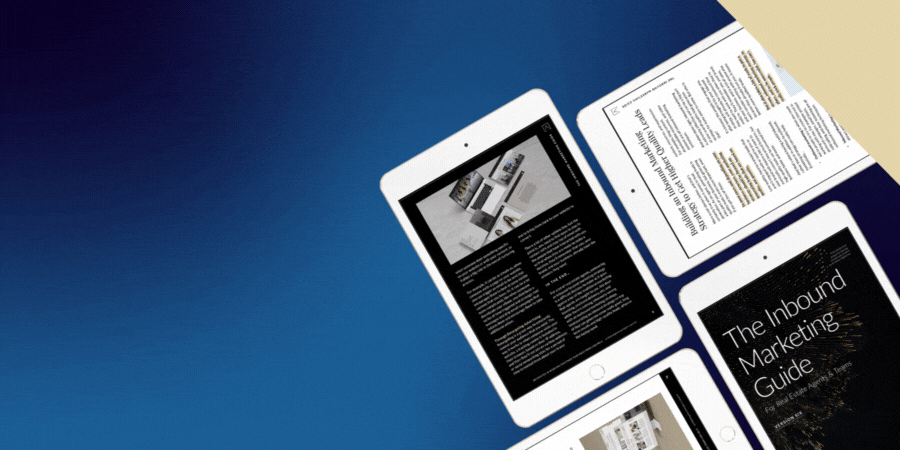A Plan for Getting More Website Conversions

I recently did a webinar for a group of real estate agents about how to get more conversions on their websites. When I was putting together the webinar outline, I started with the fact that the most important place to start is with your target audience.
And that’s because depending on who your target audience actually is, they’ll behave differently online.
So rather than just talking about website conversions, I started with the concept of planning out conversions based on who your target audience is. Essentially, you have to put together a logical plan about what kind of conversions you actually want to get, and more importantly, what kind of conversions your user actually wants to do.
First, what is a conversion?
A conversion is not just wanting the user to do something, but instead, having them do it successfully.
And yes! We can make the user do what we want them to if we figure out what we want them to do beforehand, and plan out our conversion points accordingly.
What are the first steps?
As mentioned, the first thing you need to do is plan out who your target audience actually is:
To us, your target audience specifically is: who you work with currently, who you want to work with, and who you don’t want to work with.
Determining each of these is equally important. How do you figure it out? You need to ask a lot of questions early on.
★ If you want to learn more about target audience, have a look at these posts:
- Finding Your Target Audience, and Why You Should
- Why Your Target Audience Shouldn’t Be Anyone and Everyone
- Why Personal, Targeted Marketing Means Better Real Estate Leads
Why do you need to know who you target audience is before you get started working on getting more conversions? Because different people behave differently online, and you need to identify who you want to target so you can figure out how to best convert them. You need to think about not only what you want the user to do on your website, but also, what the user actually wants to do on your website.
What type of conversion do you want?
There are many ways to convert a user, as long as you’re providing them something of value for performing the action you want them to, and it’s very clear what’s in it for them. For example, you may want the user to:
- Fill out a form
- Call or email you
- Download something
- Subscribe to something
So how do you get conversions?
To get more conversions, you have to provide the user with something that’s valuable to them. In an online world where everyone is asking for info, a typical user is wary of giving up their email address unless they know exactly what they’re going to get, and again, if what they’re getting is of value to them. So, for example, if you have IDX listings on your website, and you block the listings unless the user puts in an email address, that isn’t really effective for a few reasons, but mainly because you’re not giving the user any value. IDX listings aren’t special; they’re on every other real estate agent’s website, and they’re on realtor.ca, so why try and block the user from seeing them? There are a lot of other places they can go to see the listings without putting their email address in. And if you do block it, and they do actually put their email address in to see the listings, chances are, you’ll get a lot of fake email addresses anyways. When you’re planning out website conversions, you’ll want to ask yourself:
- Does your website actually provide something that the user wants to do?
- Does your website have a conversion point on every page? And if so, is that conversion specific to what the user would actually want to do on that page?
- Do you have landing pages that are properly structured? Do you have ad campaigns in place that drive users to those landing pages?
What kind of conversions are there?
When you’re planning out conversion points, you might want to the use:
- Forms, with the absolute minimum number of fields you need
- Landing pages
- Popups, triggered at the correct time
- Block content, which is displayed when the user performs an action, like entering their email address
- Ad campaigns, run to drive users to specific pages
So what’s next?
Before you begin planning out conversion points on your website, you’ll want to identify your target audience. Remember that this is important because it will help you determine what your user wants to do, and what they don’t want to do. Once you understand your target audience better, then you’ll want to think about what types of conversions they’re most likely to do successfully. For example, they may not want to give you their email address to see blocked content, but they may want to fill out a form to get more information about what their home might be worth. Once you understand your target audience, what they want to do, then you’ll be able to plan out what types of conversions they’re most likely to do, and then build those conversion points into your website.
Want to get better, more qualified leads and build your authority? Our inbound marketing guide is a walkthrough of the overall philosophy of inbound marketing, why it’s effective, and how you can build it into your own real estate marketing strategy to get better marketing results.






















